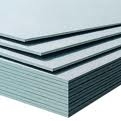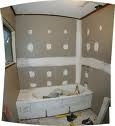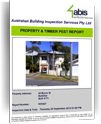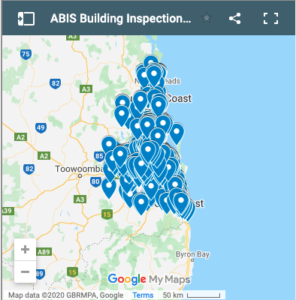Plasterboard Wall Sheets
Plasterboard is used as an internal lining board to provide smooth, strong, long-lasting walls and ceilings. Its durable surface will accept most types of decorative finishing, including paint, wallpaper and texture compounds.
Design Considerations
Levels of Finish
Levels of finish are defined in the Australian/New Zealand Standard AS/NZS 2589.1 : 1997 ‘Gypsum linings in residential and light commercial construction – Application and Finishing.’ This standard is intended to provide builders, plasterboard installers and finishers, and their customers with the various defined methods and practices necessary to meet the customer’s expectations in terms of the ‘Level of Finish’.
Problems with Plasterboard
Cracks are one of the biggest problems that occur with plasterboard. When cracks appear in plasterboard, they typically occur wherever there is a change in direction; for example in hallways and ceilings. Gypsum wallboard is one of the most commonly used varieties of plasterboard, and changes in temperature and/or moisture can cause stress, movement and subsequently, cracking within it.
Control Joints
Movement and stresses created by temperature and humidity fluctuation can result in deformation and damage to internal linings and partitions. As a means of preventing cracking, it is recommended that plasterboard surfaces be isolated from structural elements, except the floor, by the use of control joints spaced apart appropriately, at approximately 9 metres from floor to ceiling or other means where:
• A plasterboard surface abuts any structural element or dissimilar wall or ceiling assembly
• The construction changes within the plane of the partition, wall or ceiling lining
• Control joints incorporated in a building to permit movement in the structure must be carried through all areas lined with plasterboard.
Lighting
Any imperfection in a completed lining installation will be made obvious by a condition called critical lighting or glancing light, where the incident light from an artificial or natural light source is nearly parallel to the surface. Glancing light also greatly exaggerates the size of imperfections making them glaringly obvious.
Ways to minimise the effect of critical lighting from artificial lighting sources:
• Locate fluorescent lights about 450mm below the ceiling, as this will give a more even distribution of light
• Use more rather than fewer lights and install at regular spacings to give a more even, diffused light and to minimise the shadows that can occur from a single row or single light source
• Recess light fittings into a ceiling (although recessed lights are more likely to be associated with glare problems)
• Allow a generous angle of incidence to the surface for feature lighting such as spotlights, to minimise the highlighting of imperfections
• Do not locate a single or isolated unshaded light source close to a wall or ceiling in a space that has generally low levels of light
• Do not use uplights, wall-washers and spotlights in areas with a smooth wall finish to eliminate light being emitted at a glancing angle to the surface
• Design soft rather than harsh lighting conditions
Ways to minimise natural lighting problems are:
• Do not take window glazing right up to the ceiling level
• Avoid placing windows immediately adjacent to the end of a wall
• Provide sunshades over the window
• Recess the window to stop the sunlight reaching the wall.
Heating
The following situations may give rise to localised high temperature conditions (≥45°) which may be detrimental to wall and ceiling linings:
• Radiant ceiling heaters
• Heat pumps
• Reverse cycle air conditioners
• Solid fuel stoves.
Applied Finish Selection
Finishes applied to plasterboard can have a significant effect on the perceived quality of the installation, particularly where critical lighting conditions exist.
General rules when selecting an applied finish:
• The difference in texture and absorption characteristic between the body of the sheet and the joint may show through some thin paint coatings
• Imperfections show more readily on ceilings than on walls
• Textured or heavy patterned finishes tend to hide imperfections
• Matt finishes minimise imperfection visibility
• Semi-gloss and gloss finishes highlight imperfections.
Lighter colours (when compared to darker colours) are:
• Less likely to show imperfections and impact damage
• More effective at diffusing the light and reducing shadow effects, particularly in smaller rooms
• Gloss paints tend to highlight paint application variations (e.g. where a good wet edge has not been maintained when painting)
• Paint or thin wallpaper finishes are less tolerant of imperfections
• Paint applied with a longer pile roller tends to mask imperfections better than those applied with a short pile roller.







